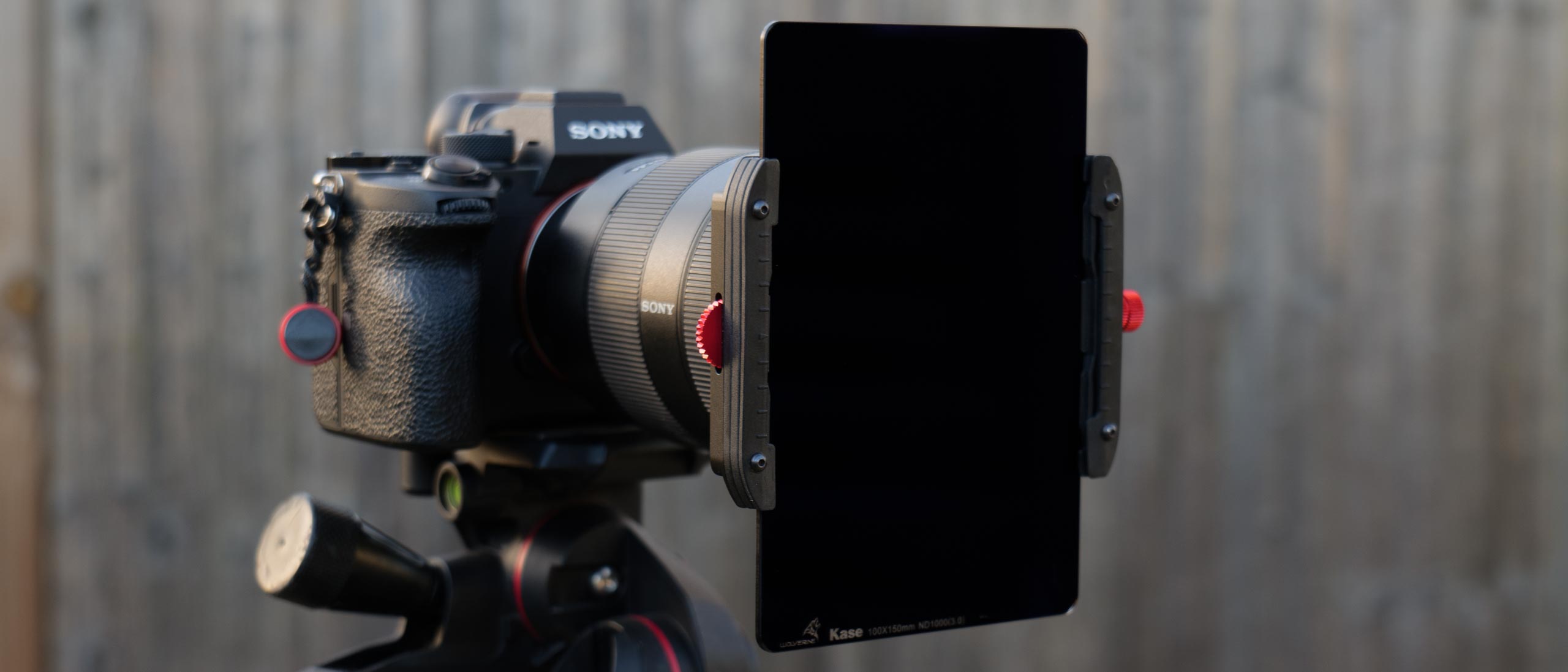Digital Camera World Verdict
Kase’s Wolverine 100mm ND1000 filter is tough and easy to clean, and it makes a great pairing with the company’s Wolverine Series K9 filter. The extra length of the 100x150mm filters also makes them easier to position in the holder and there’s less worry that they will be nudged out of position when a graduated filter is moved. It delivers high-quality results with just a hint of a colorcast that be addressed very easily.
Pros
- +
Tough, durable glass
- +
Minimal color cast
- +
Matches the results from Kase’s other Wolverine ND100 filters
Cons
- -
No light seal (it’s on the Kase holder)
- -
Relatively expensive
Why you can trust Digital Camera World
Kase offers a huge range of filters with some that are designed to slot into the rear end of certain lenses, circular filters that attach via magnets and holder-mounted square and rectangular filters in a selection of sizes all the way up to 150 x 150mm.
Kase uses Wolverine Glass throughout its neutral density (ND) filter range because it’s tough and scratch-resistant as well as delivering high optical performance. Using the same material through the range means that you get the same results whichever Kase Wolverine filter system you use. I’ve tested the Kase Wolverine 100mm ND1000 (10-stop) filter for this review.
Specifications
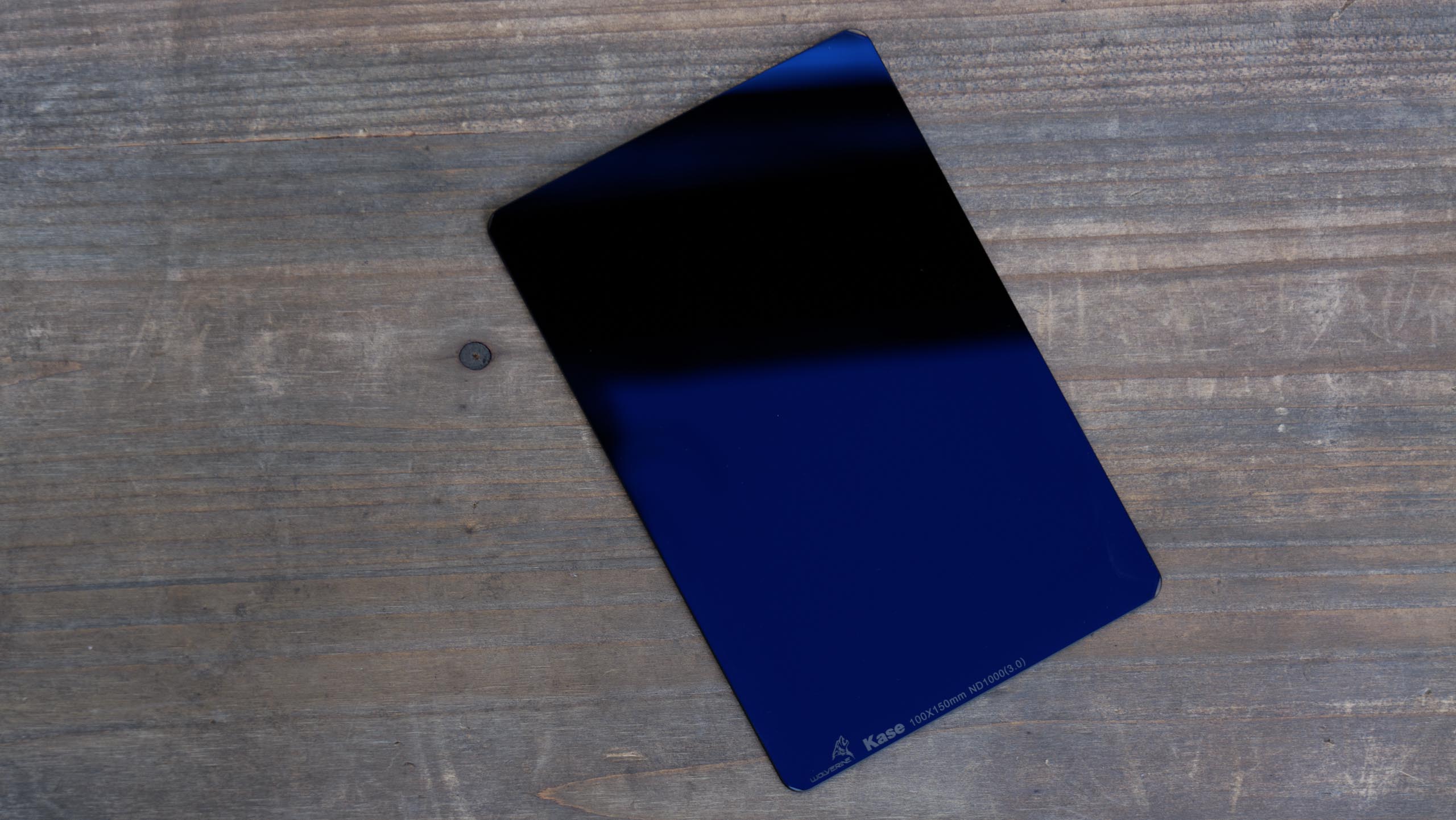
Sizes available: 100x100mm, 100x150mm ( or150x150mm)
Mount: via 100mm-type holder (or 150mm-type holder)
Construction: Wolverine glass
Key features
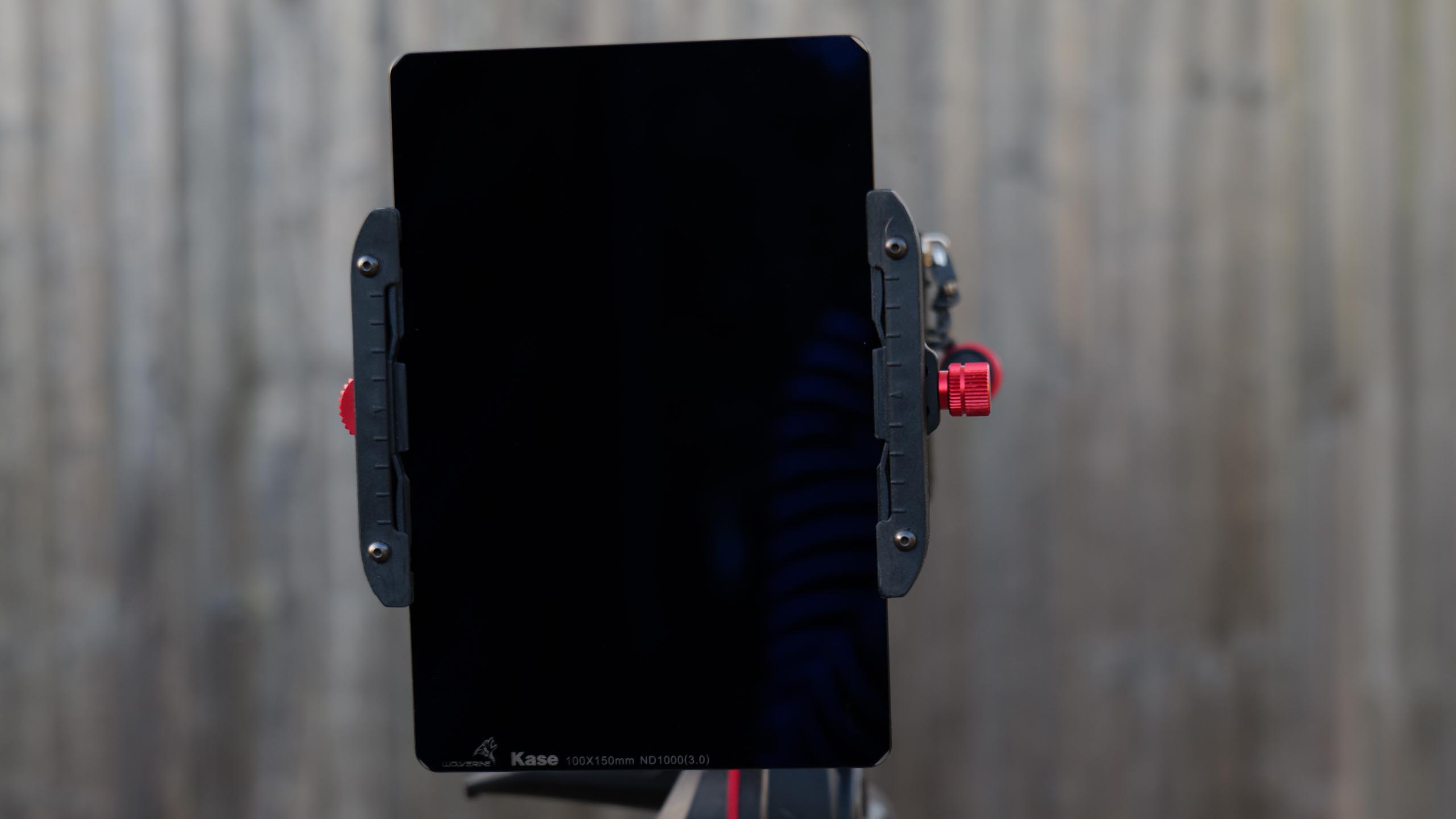
Kase offers the Wolverine ND1000 filter for its 75mm, 100mm and 150mm filter systems - in a choice of square and rectangular shapes. The Kase Wolverine Series K9 filter holder is the most commonly used of those as it accommodates 100mm type filters which are widely used by photographers with full-frame and APS-C format cameras. There’s also a newer Kase Wolverine Armour system which is compatible with 100mm type filters but they must be mounted in a frame.
In some territories, the 100mm-type Wolverine ND1000 filter is available in a 100x100mm square format, but in others is found as a 100x150mm rectangular filter. That means it’s the same size as most graduated filters, including many of Kase’s own.
The Wolverine glass has a metallic nano electro-coating that makes it scratch resistant, water repellent, anti-reflective and easy to clean.
Kase makes neutral density filters of different strengths. The ND1000 filter reviewed here is designed to reduce the exposure by 10 stops, but there are also ND8 (3 stop), ND16 (4-stop), ND64 (6-stop) and ND64000 (16-stop) versions.
Build and handling
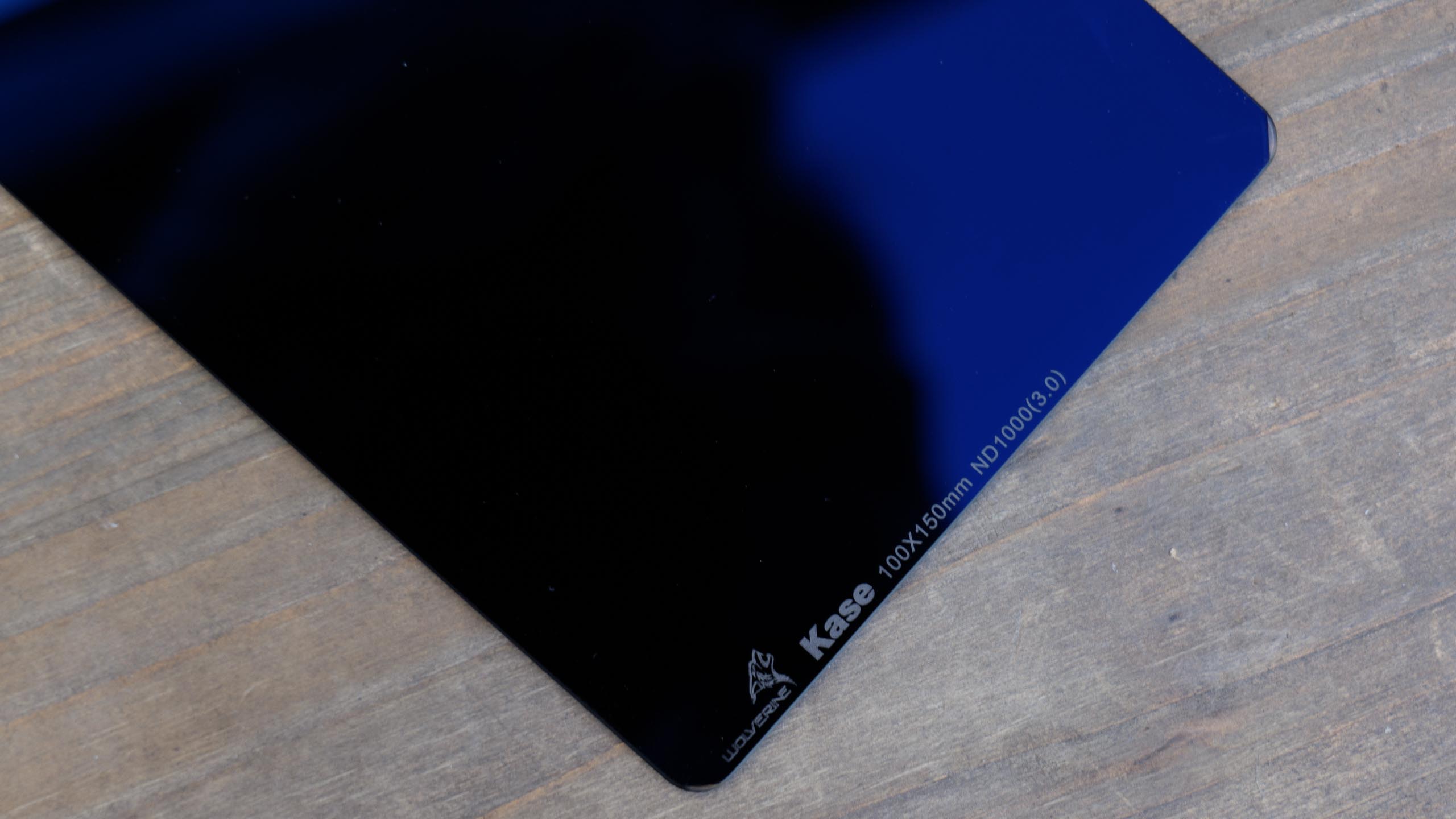
Like all 10-stop filters, the Kase Wolverine 100mm ND1000 looks almost impenetrably black, but hold it but to a light source and you’ll find it is possible to see through it.
Also, from some angles, the filters looks to have a blue or purple coating. When this coloration is visible, any fingerprints on the surface are most apparent and they can be removed quickly by rubbing with a lens cloth.
While Kase would like you to use the Wolverine ND1000 filter in its own Wolverine Series K9 filter holder, it is compatible with other holders for 100mm type filters, including the Lee Filters Lee100 Holder. However, the two companies take a different approach to the light seals that are usually used with dense ND filters. Lee Filters puts the seal on the filter while Kase puts it on the holder. That means if the Kase filter is used with a Lee Filters holder there is more chance of light getting into to the lens from around the back of the filter than there is if the filter is used in Kase’s holder.
The corners of the filter are rounded which makes it easy to slip into a holder without having to spend too long lining it up or fiddling about.
The extra 5cm on the 100x150mm ND1000 filter over the more common 100x100mm filter proves reassuring when you adjust the position of a graduated filter mounted in the same holder. Normally you have to take care to not move the square filter out of position, but with the rectangular filter you can move it in tandem with the graduated filter with little concern.
Performance
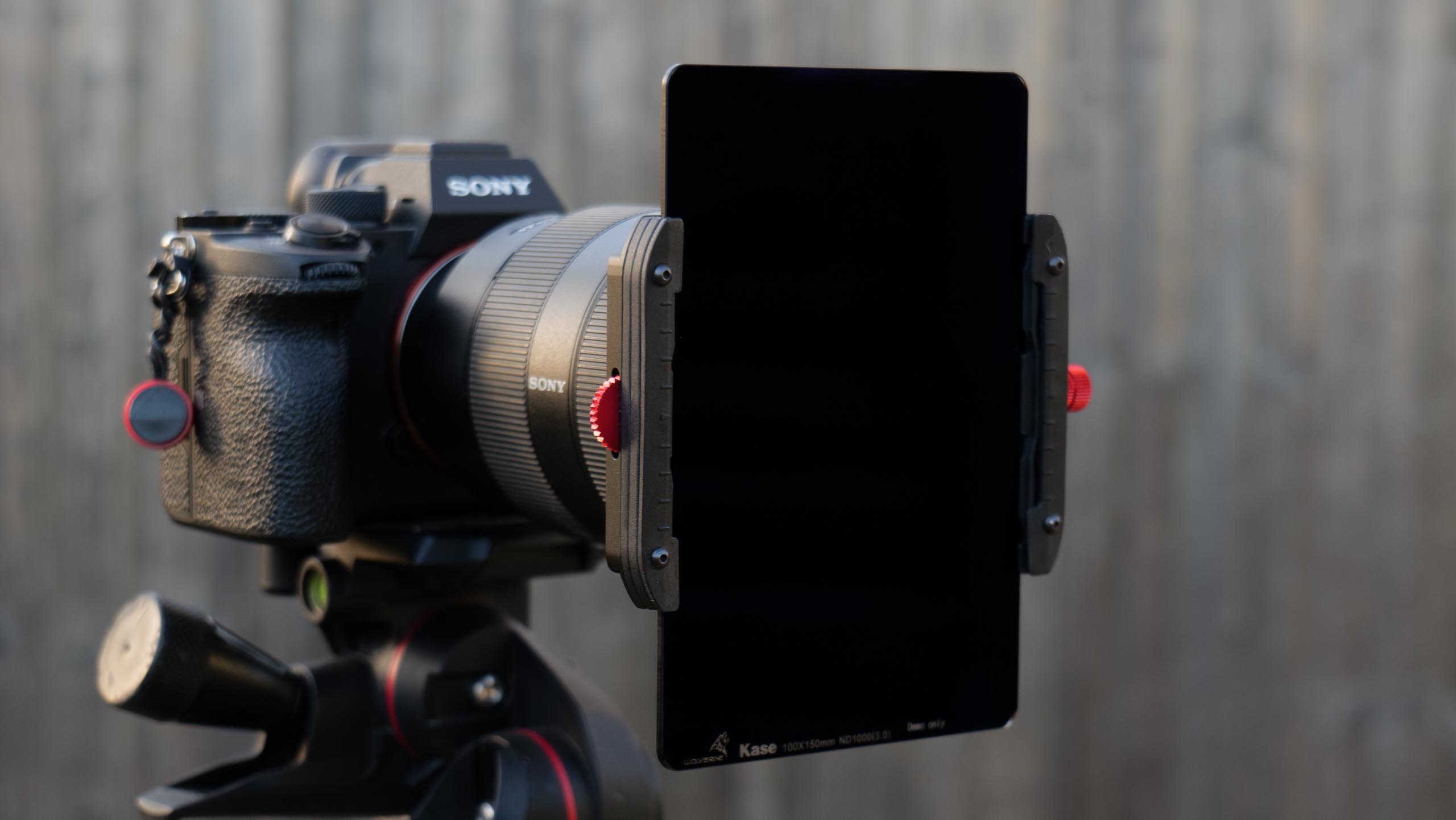
The most common use of a 10-stop neutral density filter is to enable long exposures to be used in daylight so that moving water, clouds, people or anything else is blurred. Ideally, the image captured using the filter should look exactly same with regards to color, contrast, and sharpness as the image without it. The Kase Wolverine 100mm ND1000 gets very close to that with only a slight cast in some conditions when used with the automatic white balance setting on a Sony A7R IV. This is very easy to correct by adjusting the white balance settings while processing the images, but it could also be done by setting a custom white balance value at the shooting stage.
The camera’s light meter plays a role in the exposure setting selection, for example, with the Sony A7R IV, I found I needed to increase the exposure over what the camera indicates by around 1/3 stop to make the images with the filter match those without. However, the Kase Wolverine 100mm ND1000 cuts out the claimed 10 stops of light, which is the equivalent of taking a 1/400sec exposure to 2.5 seconds.
Importantly, even with a high-resolution camera like the Sony A7R IV, I saw no drop in the level of detail or sharpness in my images shot using the Kase Wolverine 100mm ND1000 filter.
Verdict
While the Kase Wolverine 100mm ND1000 isn’t as quick to use as one of Kase’s circular magnetic filters, using a filter holder gives you the scope to also use a graduated filter if you wish.
The Kase Wolverine 100mm ND1000 is well-made easy to clean and robust enough to survive a drop onto rocky ground. We saw a subtle color shift in some of our images, but it’s not a major issue and can be corrected quickly. Most crucially, there’s no drop in the level of detail or sharpness in high-resolution images.
Read more:
• Best filter holders
• Best ND grad filters
• Best polarizing filters
• Best neutral density (ND) filters
• Best variable ND filters
• Best lens protection filters
• Best light pollution filters
• Best close up filters
• Camera filters explained
Angela has been testing camera gear from all the major manufacturers since January 2004 and has been Amateur Photographer’s Technical Editor and Head of Testing for Future Publishing’s photography portfolio (Digital Camera Magazine, PhotoPlus: The Canon Magazine, N-Photo, Practical Photoshop, Photography Week and Professional Photography magazines, as well as the Digital Camera World and TechRadar websites). She is the founder of SheClicks - a community group that encourages and supports female photographers.
